[/caption]
Note: To celebrate the 20th anniversary of the Hubble Space Telescope, for ten days, Universe Today will feature highlights from two year slices of the life of the Hubble, focusing on its achievements as an astronomical observatory. Today’s article looks at the period April 2000 to April 2002.
The International Center for Photography gave its 2000 Infinity Award to the Hubble Heritage Project, in the Applied Photography section. And what did that team choose to showcase their award? The above image of NGC 3314! Clearly the Hubble has had a deep impact far beyond the astronomical community and space fans.
Columbia’s last flight, before the one that ended in disaster, was STS-109, or the Hubble servicing mission 3B, in March, 2002. In terms of imaging capability, it was the most dramatic; the Advanced Camera for Surveys (ACS) was installed (replacing the Faint Object Camera), and NICMOS’ cooling system was replaced (giving the Hubble ‘night vision’ again – it could see in the infrared once more). I’ll be covering the cornucopia of science results from ACS in later articles.
My pick for the Hubble image most of you, my readers, would put at the top your ‘what I remember from these two years’ is Stephan’s Quintet.
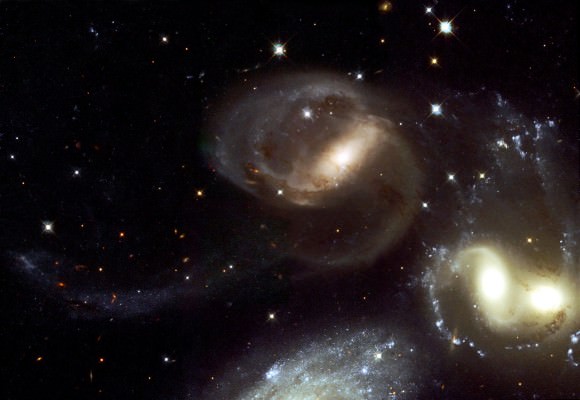
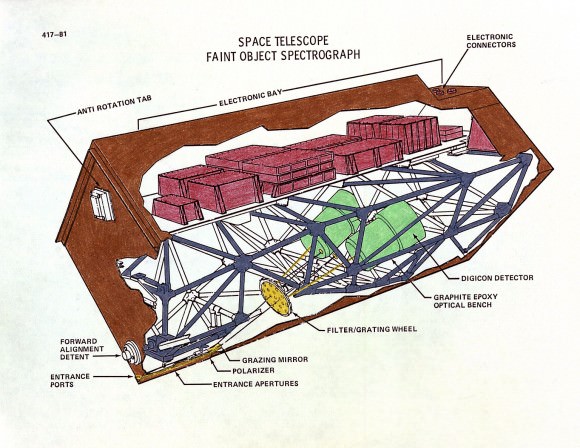
What we see on a webpage or in a magazine, when we look at a Hubble image, resembles a photograph. What an astronomer sees is data, glorious data, in all its numerical detail (astronomers even invented a special file format for their data, called FITS, short for flexible image transport system; more about it here). And among the most critical aspect of astronomical data is its calibration, e.g. the function which relates pixel values to things like flux (which may be measured in janskys, or ergs per second per square meter per hertz). But how do you calibrate an instrument that’s aboard the Hubble? You turn to the Instrument Physical Modelling Group, part of the Space Telescope European Coordinating Facility! This highly specialist team actually models the Hubble’s instruments, in software, from first (physics) principles, and from those models produces robust software for taking the raw data from a Hubble instrument and producing calibrated, science-grade data. They then make their results public, for anyone and everyone to use; for example the Faint Object Spectrograph Post-Operational Archive (you can read the details of their work in ST-ECF Newsletter 29).
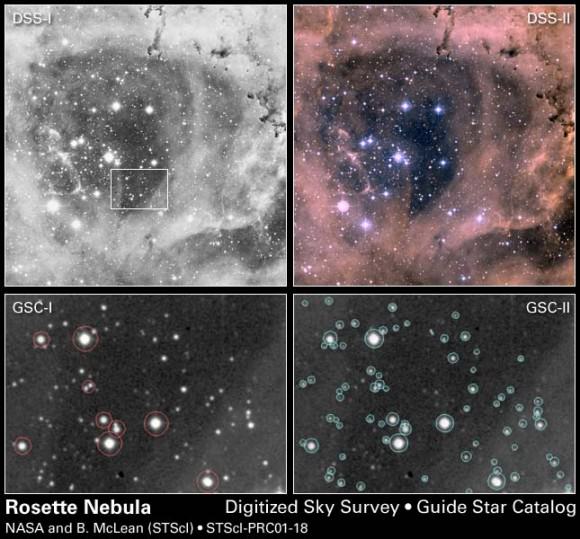
Another behind-the-scenes activity is the production of the Hubble Guide Star Catalog, essential for the Hubble’s smooth operation (and a major boon to amateurs); 2001 saw a major new release (II).
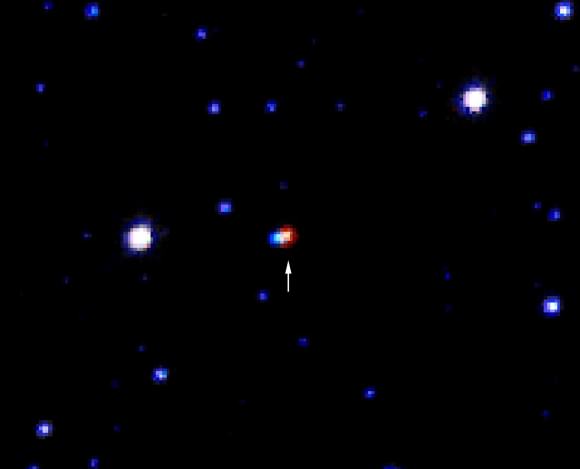
Every now and then a (faint) star will pass close to the line of sight of a more (bright) distant star, and we will see the (distant) star brighten in a characteristic way (due to gravitational lensing). One kind of such lensing is the object of many astronomers’ desire, a MACHO (massive compact halo object); even more desirable is to see both the lensed and lensing stars, as separate points of light, some time after the event. Hubble observed just such a rarity.
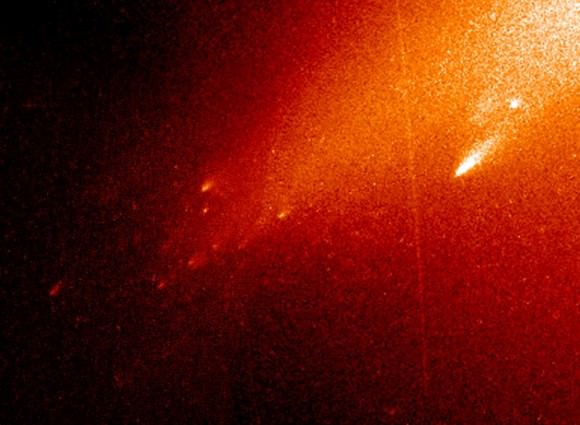
Comets are fragile things; their very tails tell tales of constant erosion at the hands of sunlight. And when they die, do they do so with a bang, or merely a whimper? Hubble captured an example of the latter (Comet LINEAR is no more).
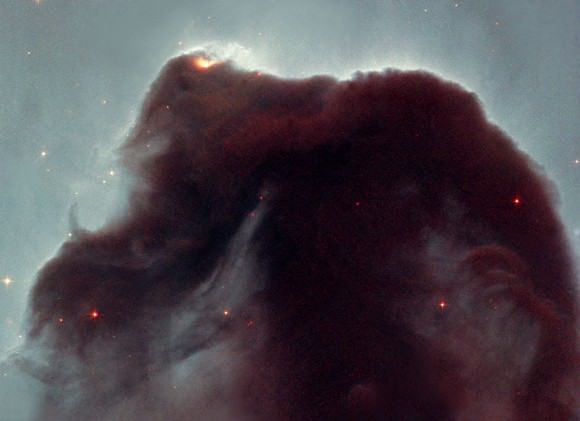
But the Hubble isn’t only for astronomers, even amateur astronomers; it’s there for us all, to take pictures that awe and inspire us. And by popular demand, the famous Horsehead nebula, as never seen by anyone using a telescope down here on Earth.
It was during these two years that Universe Today began its coverage of the Hubble (and other astronomy and space topics); for example Hubble Reveals Backward Galaxy (however, I can’t find any Universe Today stories from this period with Hubble images; can you help me out please, dear reader?)
Tomorrow: 2002 and 2003.
Previous articles:
Hubble’s 10th Birthday Gift: Measurement of the Hubble Constant
Hubble at 8: So Many Discoveries, So Quickly
Hubble’s 20 Years: Now We Are Six
Hubble’s 20 Years: Time for 20/20 Vision
Hubble: It Was Twenty Years Ago Today
Sources: HubbleSite, European Homepage for the NASA/ESA Hubble Space Telescope, The SAO/NASA Astrophysics Data System

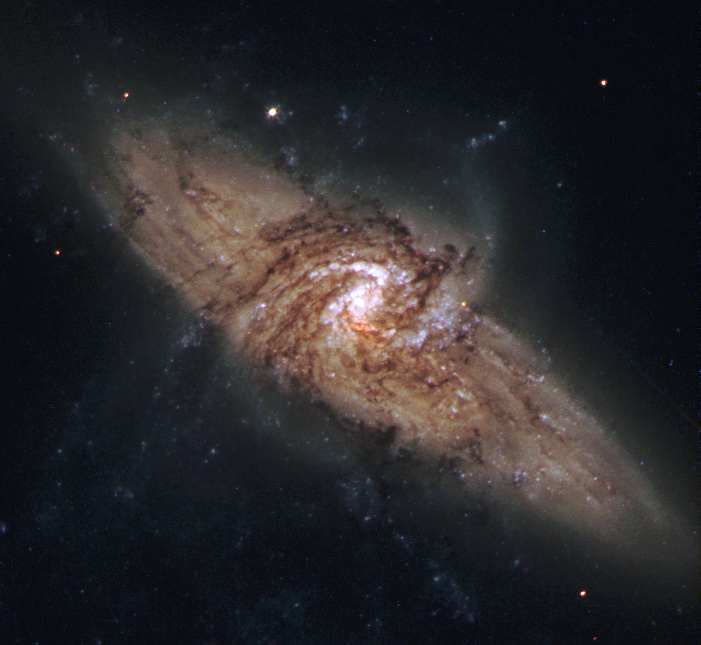
Great article,…Hey! I’m a human photographer!!!..Just wait till I go in Space..heh..Below’s Me -vs- Hubble,but I’m in light doom of the worse possible light pollution there is !
ACS replaced the Faint Object Camera, not the WFPC2, which was replaced on the last servicing mission with WFC3.
Thanks Nerull. Fixed.
I can’t help but to be in awe anytime I view a picture from Hubble. It has shown us just how massive the universe is, yet it is still difficult to comprehend just how massive it is. The first time I saw the Deep Field imagery, I believe I went over and over it for hours; coming away with so many questions about the many galaxies you could see.
It also makes it hard to wait for the J. Webb telescope. The possibility of seeing the formation of galaxies at redshift 15-20, viewing items Hubble has found, but have the ability to penetrate more… perhaps to see planets forming around new stars.
Thank you Hubble crew for some of the finest imagery ever captured.